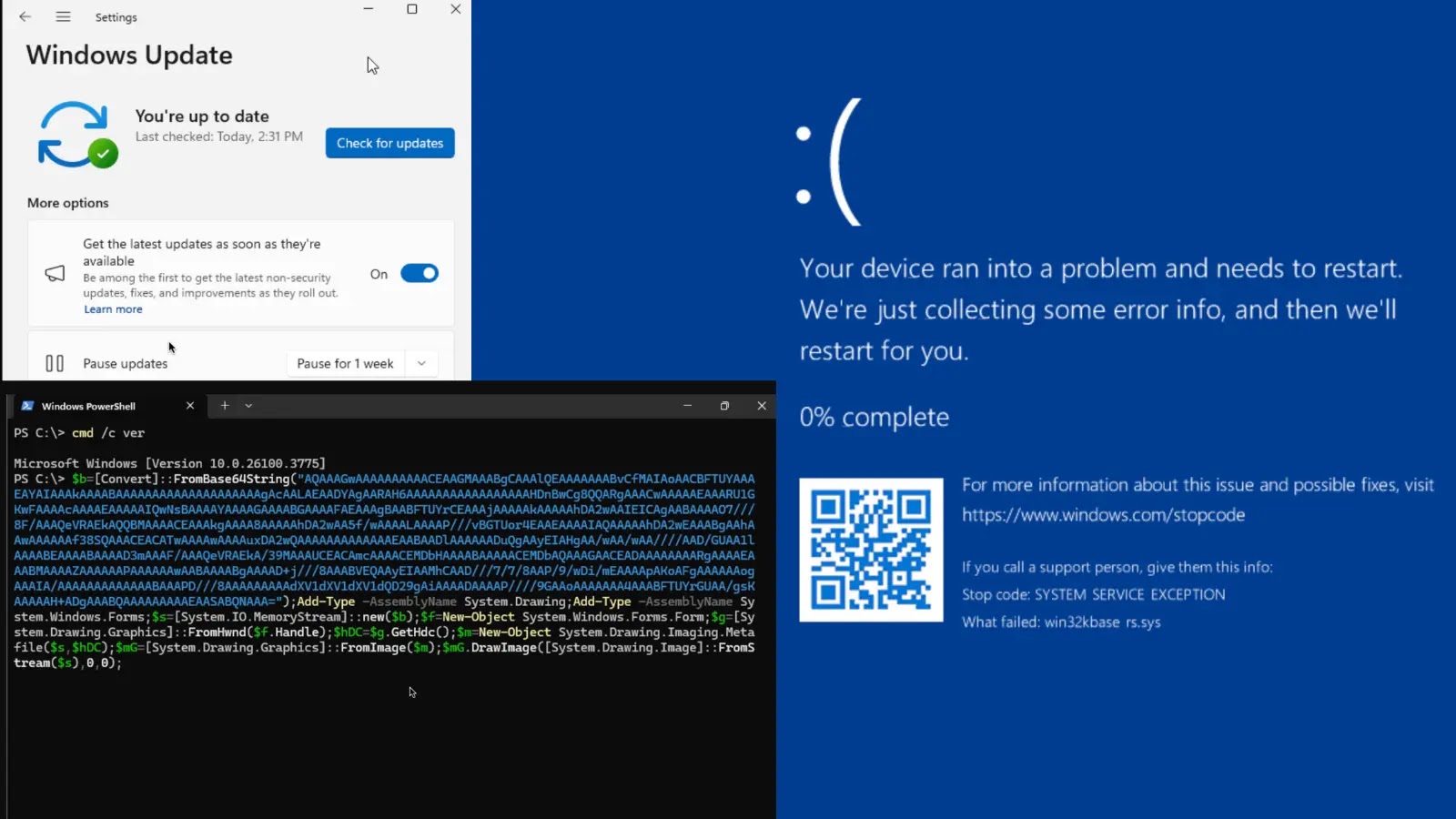
Windows Rust-based Kernel GDI Vulnerability Leads to Crash and Blue Screen of Death Error
Unpacking the Windows GDI Vulnerability: A Rust-Based Kernel Component’s Bumpy Debut
The intricate world of operating system development is fraught with challenges, and the integration of new technologies, even those lauded for their security benefits, can sometimes introduce unexpected vulnerabilities. Recently, a significant flaw was identified in a newly adopted Rust-based kernel component within Microsoft’s Windows operating system. This vulnerability, specifically affecting the Graphics Device Interface (GDI), had the potential to trigger a system-wide crash, culminating in the dreaded Blue Screen of Death (BSOD).
While Microsoft classified this particular GDI vulnerability as moderate severity, its implications are noteworthy. It highlights the inherent complexities of integrating memory-safe languages like Rust into critical OS components and underscores the persistent need for robust security testing and analysis.
The Rust-Based GDI Kernel Component: A Double-Edged Sword
Microsoft has been progressively incorporating Rust, a language renowned for its memory safety guarantees, into its Windows kernel. This strategic move aims to mitigate common vulnerability classes, such as buffer overflows and use-after-free errors, which have historically plagued C/C++ implementations. The Graphics Device Interface (GDI) is a core component of Windows, responsible for rendering graphical objects and managing display output. Its critical role means any vulnerability within it can have widespread consequences.
The identified flaw was rooted in this new Rust-based GDI kernel component. Despite Rust’s memory safety features, the vulnerability demonstrates that even with robust language constructs, logical flaws or improper integration can still lead to severe system instability. This serves as a crucial reminder that security is a multi-layered defense.
Understanding the Blue Screen of Death (BSOD) Trigger
A Blue Screen of Death (BSOD), also known as a “stop error,” indicates a critical system fault from which the operating system cannot recover. In this context, the GDI vulnerability allowed for a specific set of conditions to be met, resulting in the kernel
entering an unrecoverable state. While the precise technical details of the trigger are not publicly elaborated in the source material, a typical GDI-related BSOD often stems from:
- Improper handling of graphical object states.
- Invalid memory access when processing graphic commands or drawing operations.
- Race conditions or synchronization issues within the GDI kernel component.
The fact that a Rust-based component could lead to such a catastrophic failure underscores that compiler-enforced memory safety, while incredibly valuable, does not inherently prevent all forms of software defects that can lead to system instability.
Severity Assessment and Broader Implications
Microsoft’s assessment of the vulnerability as “moderate severity” suggests that exploiting it might require specific environmental conditions, local access, or certain user interactions. However, any vulnerability capable of causing a system-wide crash carries significant implications for system availability and could potentially be chained with other vulnerabilities for more severe attacks like data corruption or denial of service.
This incident also sparks important discussions within the cybersecurity community regarding the integration of memory-safe languages. While Rust significantly reduces an entire class of vulnerabilities, it does not magically eliminate all bugs. Developers must still adhere to rigorous design principles, thorough testing, and secure coding practices to prevent logical flaws and integration issues.
Remediation Actions
For organizations and individual Windows users, addressing vulnerabilities promptly is paramount. While this specific vulnerability’s CVE number has not been publicly released in conjunction with this report, general best practices apply:
- Apply Windows Updates Promptly: Microsoft regularly releases security patches. Ensure your system is configured to download and install these updates automatically or apply them as soon as they are available. These patches often contain fixes for kernel-level vulnerabilities like the one described.
- Maintain System Backups: In the unlikely event of system instability or future potential data corruption from similar vulnerabilities, regular backups are your last line of defense.
- Implement Least Privilege: Restrict user permissions to only what is necessary. This can reduce the potential impact if a vulnerability is exploited, as an attacker would have fewer privileges to cause system-wide damage.
- Network Segmentation: For enterprise environments, segmenting networks can limit the lateral movement of an attacker if a system becomes compromised due to a vulnerability.
- Endpoint Detection and Response (EDR): Utilize EDR solutions to monitor for unusual system behavior that might indicate an attempted exploit of kernel vulnerabilities.
Tools for System Health and Security
Maintaining a robust security posture involves leveraging appropriate tools for monitoring, analysis, and threat detection. While a “GDI vulnerability detection tool” isn’t a common standalone category, here are general tools that assist in overall system security and debugging:
| Tool Name | Purpose | Link |
|---|---|---|
| Windows Update | Deployment of security patches and updates | Microsoft Support |
| Sysinternals Suite (e.g., Process Monitor, ProcDump) | Advanced system monitoring, process analysis, crash dump analysis | Microsoft Docs |
| Windows Debugger (WinDbg) | Post-mortem kernel crash dump analysis and live debugging | Microsoft Docs |
| Endpoint Detection and Response (EDR) Solutions | Proactive threat detection, response, and continuous monitoring of endpoints | Gartner (for conceptual understanding) |
Key Takeaways
The discovery of a vulnerability within a Rust-based GDI kernel component in Windows serves as a potent reminder that security is an ongoing, multi-faceted challenge. While Rust offers significant advantages in memory safety, it doesn’t eliminate all forms of bugs. This incident underscores the importance of rigorous testing, secure development lifecycle processes, and prompt application of security updates. As operating systems continue to evolve with new languages and architectures, vigilance remains the cornerstone of effective cybersecurity.





